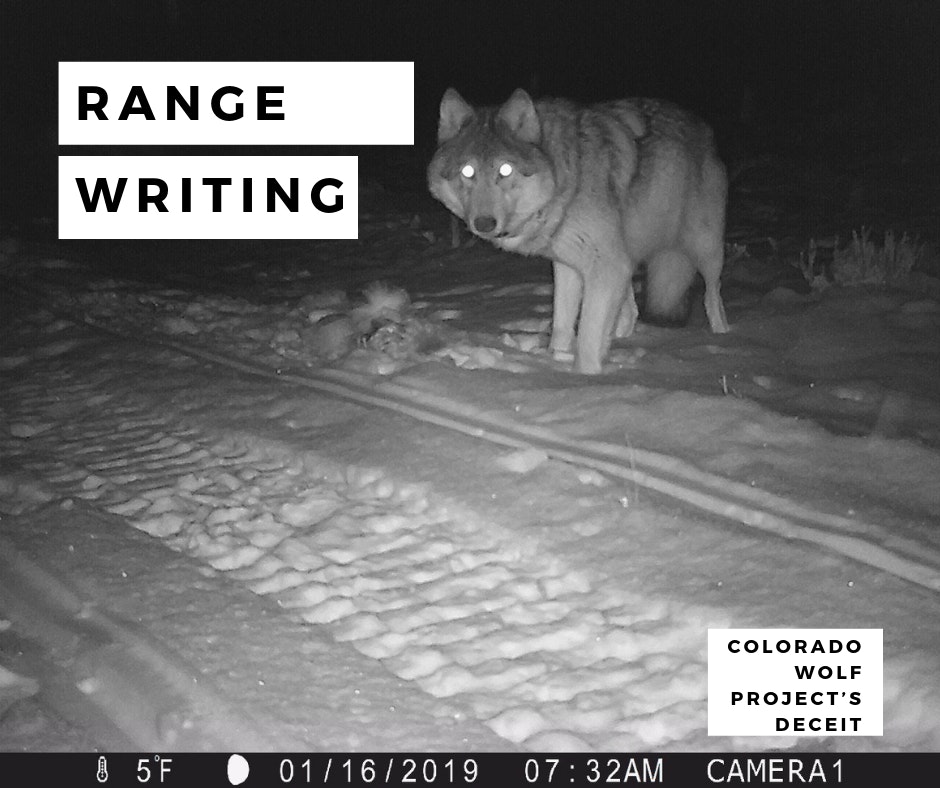The Rocky Mountain Wolf Project (RMWP) has gone into full-steamroller mode in pushing for wolf reintroduction to western Colorado, recently publishing “Nine myths about gray wolves you shouldn’t believe.”[1]
But readers should beware that RMWP isn’t telling the whole truth when it responds to these supposed myths. For the sake of brevity, I’ll only tackle a few points, but rest assured that RMWP’s response to each of its nine points is oversimplified and misleading.
RMWP: “Gray wolves are extremely wary of humans. They are shy and retiring around people and will avoid them at all costs.”
Reality: Wolves that have no reason to fear humans are not shy and wary. While wolves were under federal protection, our family had wolves in our yard in rural western Wyoming, hundreds of miles south of Yellowstone National Park. That’s not odd for residents living in areas impacted by wolves: wolves created problems by hanging out in residential areas in Jackson Hole, Wyoming and Ketchum, Idaho. Even the International Wolf Center acknowledges that human-habituated wolves are a problem.[2]
National park and state wildlife officials have killed wolves because of their bold or aggressive behavior towards humans in the Northern Rocky Mountain and Great Lakes states, as well as in Canada. And although rare, wolves are known to have killed humans in North America and in other countries (with the most recent reported attacks occurring last month in Tajikistan[3]). There are numerous other confirmed attacks on humans in which people were injured, but not killed, throughout the range of wolves.[4]
RMWP: “The truth is, wolf depredations on livestock still accounts for less than 0.1% of all livestock losses in the Northern Rockies, which includes Montana, Wyoming, and Idaho. Nearly all cattle, 99.9%, die from causes other than wolves. It’s simply a myth to believe that ranchers have much to worry about.”
Reality: {Excuse me while my head explodes.} First, not all livestock in the Northern Rockies graze on range inhabited by wolves, and it is well known that some ranch operations are impacted more than others. And confirmed livestock losses are only a small portion of the true numbers of livestock killed or injured by wolves.[5]
Since I live in the predator zone of Wyoming where wolves can legally be killed at any time, I do not receive reimbursement for livestock killed by wolves, so there is no incentive for me to have depredations confirmed or to report those losses.
Lastly, the indirect but substantial economic cost of wolves is never discussed by wolf advocates,[6]but I know that after our last surplus-kill event (involving more than a dozen dead sheep and three injured livestock guardian dogs), the weights on our market lambs decreased by 10 pounds per lamb. That was an added economic blow, in addition to the direct losses, vet fees, added labor, and overall stress to both the flock and our family.
RMWP: “Many Coloradans don’t know that there are no established gray wolf packs in Colorado. Indeed, in Colorado, even wide-ranging lone wolves from the Northern Rockies are exceedingly rare.”
Reality: This is the oft-repeated refrain used to justify the release of wolves in Yellowstone National Park, even though a hunter shot and killed a wolf in Wyoming while the reintroduction program was being debated.[7]Colorado may not have any “established gray wolf packs” but every now and then, a wolf gets killed or photographed to prove their presence in the state.[8]Recognizing that dispersing wolves are how wolf populations expand into new areas, Colorado wildlife officials issue public reminders that “it is increasingly likely that the growing wolf populations and range in nearby states will eventually expand across state lines.”[9]
Myth: Gray wolves kill for sport.
RMWP: “Nope, not true. Wild carnivores do not kill for fun; they kill to survive, which typically is very hard for gray wolves. It’s worth remembering that only humans kill for fun.”
Reality: While we can’t tell for sure if the killing is “fun” or “for sport,” wolves – like other wild carnivores (think weasel in a hen house) – do surplus kill. For example, wolves killed 120 rams in one event in Montana,[10]more than 150 sheep in Idaho,[11]and 19 elk in one night in Wyoming.[12]Although some claim that surplus killing is rare, our family has experienced wolves inflicting surplus kills on our domestic sheep flocks twice in the last eight years, so it doesn’t seem all that rare.
RMWP: “Colorado has more public lands and a bigger prey population for gray wolves than anywhere in the world. There is no doubt that Colorado can not only accommodate gray wolves, but we can allow them to peacefully coexist with hunters and ranchers.”
Reality: Peaceful coexistence? That is a fantasy. We coexist, but it is not peaceful, and coexistence is not bloodless (see surplus killing section above). By the very nature of the predator-and-prey relationship, that will never change.
[1]https://blog.rockymountainwolfproject.org/blog/9-myths-about-the-gray-wolf-you-shouldnt-believe
[2]https://www.wolf.org/wp-content/uploads/2013/05/Too-Close-for-Comfort.pdf
[3]https://www.rferl.org/a/wolves-kill-two-women-in-tajikistan-after-villagers-hunting-rifles-confiscated/29808983.html
[4]https://digitalcommons.unl.edu/wolfrecovery/27/
[5]https://www.jstor.org/stable/40801500?seq=1#page_scan_tab_contents
[6]https://www.beefmagazine.com/pasture-range/wolves-economic-bite-cattle-goes-way-beyond-predation
[7]https://www.amazon.com/Yellowstone-Wolves-Chronicle-Animal-Politics/product-reviews/093992370X
[8]https://www.outtherecolorado.com/are-there-wolves-in-colorado/
[9]https://cpw.state.co.us/aboutus/Pages/News-Release-Details.aspx?NewsID=5845
[10]https://missoulian.com/news/local/wolves-kill-sheep-at-ranch-near-dillon/article_5ff01772-938f-11de-9aca-001cc4c03286.html
[11]https://www.outdoorlife.com/blogs/newshound/2013/08/two-wolves-kill-176-sheep-1-night-near-idaho-falls
[12]https://www.idahostatejournal.com/wolves-kill-elk-but-didn-t-eat-any-meat/article_ee494313-5c20-5353-8452-86477ad7c777.html





